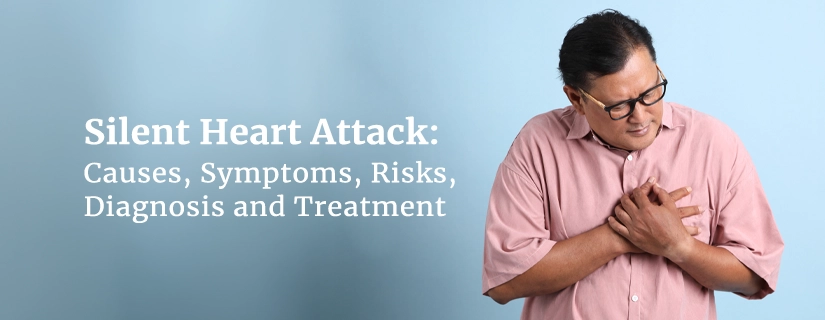-
Doctors
-
Specialities & Treatments
Centre of Excellence
Specialties
Treatments and Procedures
Hospitals & Directions HyderabadCARE Hospitals, Banjara Hills CARE Outpatient Centre, Banjara Hills CARE Hospitals, HITEC City CARE Hospitals, Nampally Gurunanak CARE Hospitals, Musheerabad CARE Hospitals Outpatient Centre, HITEC City CARE Hospitals, Malakpet
HyderabadCARE Hospitals, Banjara Hills CARE Outpatient Centre, Banjara Hills CARE Hospitals, HITEC City CARE Hospitals, Nampally Gurunanak CARE Hospitals, Musheerabad CARE Hospitals Outpatient Centre, HITEC City CARE Hospitals, Malakpet Raipur
Raipur
 Bhubaneswar
Bhubaneswar Visakhapatnam
Visakhapatnam
 Nagpur
Nagpur
 Indore
Indore
 Chh. Sambhajinagar
Chh. SambhajinagarClinics & Medical Centers
Book an AppointmentContact Us
Online Lab Reports
Book an Appointment
Consult Super-Specialist Doctors at CARE Hospitals
Dangerous Heart Rate vs Normal Heart Rate: Know the Difference
Updated on 15 February 2024

The human heart, an incredible machine, beats around 1,00,000 times a day, ensuring our bodies receive the oxygen and nutrients essential for survival. However, the rate at which it beats can fluctuate, influenced by various factors. Most individuals have, at some point in their lives, experienced a racing heart rate, whether it’s due to a strenuous workout or a stressful job interview.
Although a normal heart beat range varies, a heart that beats abnormally, rapidly, or slowly on a regular basis may be the reason for concern. To stay healthy and avoid potential issues, one must be able to distinguish between a normal and dangerous heart rate. A normal resting heart rate ranges from 60 to 100 beats per minute. Medical attention from a doctor is required when the heartbeat is deemed dangerous and exceeds 120 to 140 beats per minute or drops below 60 beats per minute.
What is the Normal Heart Rate?
When an individual is at rest, their heart pumps the least amount of blood necessary to sustain their body, which is known as the resting or normal heart rate of the human body. A normal heartbeat range is typically between 60 to 100 beats per minute (BPM) at rest for adults. However, some individuals may have a resting heart rate that is below 60 beats per minute and be regarded as normal.
Factors like age, fitness level, and medication can influence this range. For instance, athletes may experience a drop in heart rate—up to 40 beats at times. In addition, people who take certain medications, such as beta-blockers, could also have a reduced heart rate at rest.
The average normal heartbeat for men and the average normal heartbeat for women is depicted in the table below according to age:
|
Age range |
Average resting heart rate (bpm) |
|
18-20 |
81.6 |
|
21-30 |
80.2 |
|
31-40 |
78.5 |
|
41-50 |
75.3 |
|
51-60 |
73.9 |
|
61-70 |
73.0 |
|
71-80 |
74.2 |
|
Over 80 |
78.1 |
The normal resting heart rates of children vary as they age. Paediatric resting heart rates are displayed in the table below for both awake and sleeping children.
|
Age |
Waking resting heart rate (bpm) |
Sleeping resting heart rate (bpm) |
|
Newborn to 3 months |
85-205 |
80-160 |
|
3 months to 2 years |
100-190 |
75-160 |
|
2 years to 10 years |
60-140 |
60-90 |
|
Over 10 years |
60-100 |
50-90 |
What is a Dangerous Heart Rate?
A dangerous heart rate occurs when the pulse deviates significantly from the standard range. The term "tachycardia" refers to an excessively high heart beat (over 100 beats per minute). However, an individual's age and general health may also play a pivotal role in determining what is considered to be too fast.
Conversely, bradycardia is when the heart rate drops below 60 BPM, signalling a potentially risky condition. A heart rate of less than 60 beats per minute is common, even healthy, for athletes and frequent exercisers. Treatment may not be necessary for borderline or occasional bradycardia. However, if bradycardia is left untreated for an extended period of time, it might worsen. It may cause fainting and dizziness.
When is the Heart Rate Too High?
A high heart rate, especially persisting over extended periods, might indicate underlying health issues. High heart rates can result from stress, intense physical activity, dehydration, or underlying conditions like hyperthyroidism. Consistently elevated rates might lead to dizziness, chest pain, or fainting, necessitating immediate attention.
The following are factors that might cause high heart rate:
- Fever
- Overindulgence in drinking or alcohol withdrawal
- Elevated amounts of caffeine
- Blood pressure, high or low
- Imbalance of electrolyte elements, which include potassium, sodium, calcium, and magnesium, in the blood
- Adverse effects of medication
- Use of illicit substances, such as methamphetamine or cocaine, which are stimulants.
While some people may have minor to severe symptoms of high heart rate, others may not have any symptoms at all. Symptoms of high heart rate generally include:
- Respiration difficulty
- Dizziness
- Chest Pain
- Light-headedness
- Fainting
When is the Heart Rate Too Low?
A low heart rate could be a sign of a well-conditioned heart, but it could also indicate health concerns. Factors contributing to a slow heart rate include ageing, medications, heart tissue damage, electrolyte imbalances, or conditions affecting the heart's electrical system. Low heart rate can be caused by:
- A damage to the heart tissue brought on by ageing
- A birth defect involving the heart
- Inflammatory conditions like lupus or rheumatic fever
- A cardiac surgery
- An imbalance of blood components like calcium or potassium
- Sleeping with frequent pauses in breathing
The brain may not receive enough blood flow due to a dangerously low heart rate. The following are signs of low heart rate:
- Weakness or fatigue
- Confusion
- Fainting
- Chest pain
- Feeling extremely tired when exercising
A dangerously low heart rate requires prompt medical management.
When to Contact Healthcare?
In certain cases, fluctuations in heart rate could signify potential dangers. Seek medical advice if experiencing persistent irregular heartbeats, chest pain, shortness of breath, or if the heart rate consistently exceeds or falls below the heart rate normal range. Moreover, if symptoms persist despite rest, it's crucial to consult a healthcare professional promptly. Individuals with existing heart conditions, irregular heartbeats, or other health conditions should regularly monitor their heart rate and consult healthcare providers for any alarming changes.
Conclusion
Understanding the delicate balance between a normal heart rate range and a dangerous heart rate range is essential for maintaining optimal health. While slight fluctuations can be normal, persistently high or low heart rates warrant attention. A resting heart rate is a vital sign of several underlying problems as well as heart health in general. Thus, it should be constantly monitored. Regular check-ups, a healthy lifestyle, and prompt medical attention for concerning symptoms are vital in ensuring a healthy heart rate and overall well-being. Everyone must always prioritize monitoring and addressing any irregularities in the heart rate to safeguard their well-being.

ENQUIRY FORM
SELECT CATEGORIES
-
Neurosciences (16)
-
Neurology (37)
-
Neurosurgery (14)
-
Orthopaedics (48)
-
Oncology (33)
-
Obstetrics and gynecology (52)
-
Pulmonology (23)
-
Urology (20)
-
Nephrology (13)
-
Psychiatry (7)
-
Dietetics and Nutrition (111)
-
General Medicine (63)
-
Cardiac Sciences (32)
-
Vascular & Endovascular Surgery and Interventional Radiology (15)
-
Gastroenterology (46)
-
Endocrinology (23)
-
Plastic Surgery (10)
-
Critical Care Medicine (5)
-
COVID-19 (16)
-
Dermatology (16)
-
Emergency Care (1)
-
Ophthalmology (4)
-
Pediatrics (14)
-
Laparoscopic and Bariatric Surgery (8)
-
ENT (15)
-
Kidney Transplant (1)
-
Liver Transplantation and Hepatobiliary Surgery (5)
-
General Surgery (3)
-
Internal Medicine (5)
-
Medicine Information
Left Ventricular Dysfunction (LV Dysfunction): Symptoms, Causes, Diagnosis and Treatment
Chest Tightness: Causes, Symptoms, and Home Remedies
YOU MAY ALSO LIKE
RECENT BLOGS
-

Preterm Birth (Premature Birth): Symptoms, Causes, Treatment and Prevention
13 May 2025
Read More
-

Rotablation Angioplasty: Benefits, Treatments, And Recovery Time
9 May 2025
Read More
-

What Is The Difference Between IUI and IVF?
9 May 2025
Read More
-

Venous Malformations: Causes, Symptoms, and Treatment
30 April 2025
Read More
-

Varicose Vein Foam Sclerotherapy: Treatment, Benefits, and Procedure
30 April 2025
Read More
-

Radiofrequency (RF) Ablation Treatment for Varicose Veins: Know More
30 April 2025
Read More
-

Varicose Vein Sclerotherapy: Treatment, Benefits, and Procedure
30 April 2025
Read More
-

Varicose Vein Endovenous Laser Ablation: Procedure, Benefits, Risks
30 April 2025
Read More
Have a Question?
If you cannot find answers to your queries, please fill out the enquiry form or call the number below. We will contact you shortly.





























